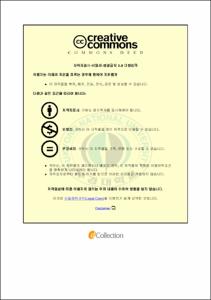수중운동이 초기 고령자 비만여성의 신체조성과 혈중지질에 미치는 영향
- Alternative Title
- The Effects of Aquarobics on Body Composition and Blood Lipid of Obese Older Women Aged 55 to 65
- Abstract
- The purpose of this study is to identify effects of aquarobics on body composition and blood lipid of obese older women aged 55 to 65. The subjects were 18 women with body fat percentage of over 30% who did not engage in regular exercise in their daily lives. They were divided into two groups: a 9 -member experimental group who were willing to do aquarobics program run by Health center of J city and a 9-member control group who didn't do aquarobics.
For the experimental group, 12 to 15 programs of basic exercise, resistance exercise and applied exercise using tools were carried out for 12 weeks. They did basic programs at the 50 to 60% of their individual maximum heart rate for the first four weeks. Then, they exercised basic and high-resistance programs at 60 to 70% of maximum heart rate for the second four weeks. Lastly, they did applied exercise with tools, maintaining their exercise strength at 70 to 80% maximum heart rate for the last four weeks. They worked out three times a week on Mondays, Wednesdays, and Fridays, lasting their exercise for 50 to 60 minutes(10-minute warm-up, 30 to 40-minute exercise, and 10-minute cool-down).
The results from this study are as follows:
1. Body Composition
1) Weight
After the 12-week aquarobics, the experimental group has seen a significant decrease in their weight by 2.88kg from 65.80±12.72kg to 62.92±12.72kg. In this study, a significant decrease means P-value is less than 0.05(p< .05). The control group has also seen a slight decrease in their weight by 0.92kg from 64.88±5.98kg to 63.92±5.98kg. However, there was no significance in the control group.
2) Body fat mass
Body fat mass in the experimental group significantly decreased by 1.5kg from 23.58±7.89kg to 21.99±7.66kg(p< .05); body fat mass in the control group slightly decreased by 1.5kg from 23.58±7.89kg to 21.99±7.66kg. However, there was no significance in the control group.
3) Body fat percentage
Body fat percentage in the experimental group significantly decreased by 2.36% from 35.57±3.34% to 33.21±3.98%(p< .05); Body fat percentage in the control group also significantly decreased by 2.2% from 36.54±4.45% to 34.34±5.05%(p< .05).
4) Skeletal muscle mass
Skeletal muscle mass in the experimental group increased by 0.49kg from 21.62±3.42kg to 22.11±3.48kg; skeletal muscle mass in the control group decreased by 0.02kg from 22.52±1.99kg to 22.50±2.00kg. There was no significance in the control group.
5) There were no significant differences between the experimental group and control group.
2. Blood lipid
1) TC
TC in the experimental group significantly decreased by 46mg/dl from 206.44±27.12mg/dl to 160.44±38.10mg/dl(p< .05); TC in the control group slightly decreased by 1.82mg/dl from 197.64±30.69mg/dl to 195.82±28.60mg/dl. However, there was no significance in the control group. There were no significant differences between the experimental group and control group before the 12-week exercise, but there were significant differences between the two groups after the exercise(p< .05).
2) HDL-C
HDL-C in the experimental group significantly increased by 8.11mg/dl from 51.33±13.73mg/dl to 59.44±7.43mg/dl(p< .05); HDL-C in the control group slightly increased by 3.82mg/dl from 46.45±13.13mg/dl to 50.27±13.48mg/dl. However, there was no significance in the control group. There were no significant differences between the experimental group and control group before and after the 12-week exercise.
3) LDL-C
LDL-C in the experimental group significantly decreased by 27.77mg/dl from 122.44±24.14mg/dl to 94.67±27.48mg/dlmg/dl(p< .05); LDL-C in the control group slightly decreased by 1.28mg/dl from 123.73±27.24mg/dl to 122.45±27.67mg/dl. However, there was no significance in the control group. There were no significant differences between the experimental group and control group before the 12-week exercise, but there were significant differences between the two groups after the exercise(p< .05).
4) TG
TG in the experimental group significantly decreased by 43mg/dl from 123.33±47.66mg/dl to 80.33±40.22mg/dl; TG in the control group decreased by 22.18mg/dl from 137.09±77.67mg/dl to 114.91±61.70mg/dl. However, there was no significance in the control group. There were no significant differences between the experimental group and control group before and after the 12-week exercise.
- Issued Date
- 2011
- Awarded Date
- 2011. 2
- Type
- Dissertation
- Publisher
- 부경대학교
- Department
- 대학원 체육학과
- Advisor
- 신군수
- Table Of Contents
- Ⅰ. 서론 1
1. 연구의 필요성 1
2. 연구의 목적 4
3. 연구의 문제 5
4. 연구의 제한점 5
5. 용어의 정의 6
Ⅱ. 이론적 배경 9
1. 노인의 특성 9
2. 수중운동의 발달 11
3. 수중운동의 효과 및 특성 12
4. 수중운동과 신체조성 14
5. 수중운동과 혈중지질 16
Ⅲ. 연구방법 19
1. 연구대상 19
2. 측정도구 19
3. 측정항목의 선정 20
4. 측정방법 20
1) 신체조성검사 20
2) 혈액성분검사 21
5. 실험계획 및 방법 21
1) 사전검사 21
2) 본 실험 21
3) 사후 검사 22
6. 자료처리 방법 26
Ⅳ. 연구결과 27
1. 신체조성의 변화 27
2. 혈중지질의 변화 32
Ⅴ. 논의 39
1. 신체조성의 변화 39
2. 혈중지질의 변화 44
Ⅵ. 결론 51
1. 신체조성 51
2. 혈중지질 52
참고문헌 54
- Degree
- Master
- Files in This Item:
-
-
Download
 수중운동이 초기 고령자 비만여성의 신체조성과 혈중지질에 미치는 영향.pdf
기타 데이터 / 694.78 kB / Adobe PDF
수중운동이 초기 고령자 비만여성의 신체조성과 혈중지질에 미치는 영향.pdf
기타 데이터 / 694.78 kB / Adobe PDF
-
Items in Repository are protected by copyright, with all rights reserved, unless otherwise indicated.